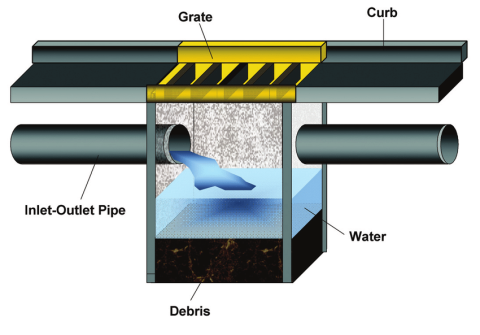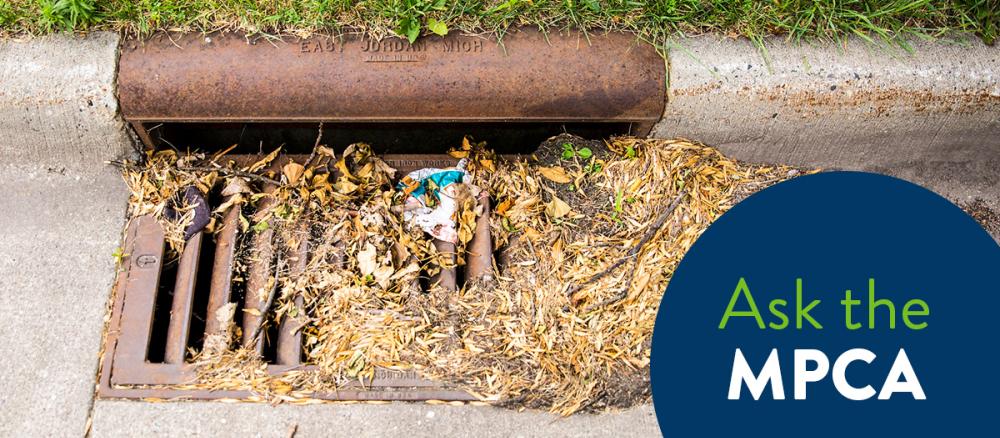Ask the MPCA features questions Minnesotans have asked us, on the issues the agency works on, from waste disposal, water and air quality, and chemicals in products to recycling and reuse, contaminated sites, and septic systems. If you have a question for MPCA staff, submit it with the Ask MPCA online form
Question
Our city is proposing a municipal stormwater catch basin next to multiple private homes. This is of major concern to residents due to the impact of polluting groundwater or drinking water with street runoff of lead, mercury, and dangerous other pollutants. What are the risks from this catch basin?
Answer

Runoff from rain and snowmelt does contribute to water quality problems in Minnesota lakes and rivers, though a storm drain catch basin in your neighborhood will pose little risk to you and your neighbors. You may already have several nearby! Catch basins are often part of the storm drains on many residential streets.
Ideally, only water would enter urban storm drains, because the water is not treated before it is discharged into a lake, river, or stream. In reality, stormwater carries dirt, lawn chemicals, car fluids, trash, leaves, grass clippings, and much more. Municipal storm systems can filter out some of these pollutants.
Water and debris flow into storm drains, typically through a grate, into the catch basin. Catch basins act as the first line of defense by allowing some sediment, leaves, and debris to settle to the bottom, while water moves onto ponds, rain gardens, or other elements of the stormwater system. The catch basin may help improve the performance and longevity of those elements.
“If properly designed and maintained, catch basins, rain gardens, ponds, and other stormwater treatment practices should not present any significant risks and can help reduce the amount of pollutants that would otherwise reach natural bodies of water and drinking water supplies," says Cole Landgraf, a municipal stormwater pollution control specialist at the MPCA.
The MPCA regulates municipal stormwater systems with the goal of reducing pollutants in stormwater discharges. Learn more on the Stormwater permitting page.
